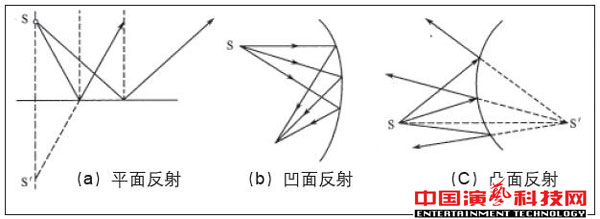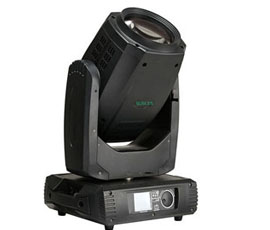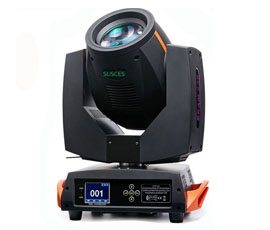
Indoor geometric acoustics design
When the frequency of sound waves is high, that is, the wavelength of the acoustic wave is smaller than the scale of the reflection surface in the room, the acoustic wave can be regarded as the acoustic energy propagating along the sound line in the concept of light in the geometric optics, and the fluctuation performance of the acoustic wave is neglected. Is geometric acoustics. The geometric acoustics method is very effective in studying the effects of the various reflecting surfaces in the room, and it is also possible to check whether the sound is focused in the room. The geometric acoustics method uses conditions such that the size of the reflector or obstacle is much larger than the wavelength of the acoustic wave. At this time the sound waves can be reflected in accordance with the geometrical optics reflection law with the reflection angle equal to the incident angle.

Figure 1 The spread of indoor sound
Figure 1 shows a cross-section of a rectangular room, when the sound source at the S sound, the room heard the first R heard by the sound source directly from the sound, that is, direct sound SR, and then hear Reflected by the sound source through a wall to reflect the arrival of a reflection of SAR, SBR, after the two walls reflect the reflection of the secondary reflection of the sound SCDR, after the three walls reflect the sound of the three people to hear the sound ... ... until many times to reflect the sound. As the surface of the room to reflect the sound when the sound is also part of the sound energy, so the reflection of the sound with the increase in the number of times, the intensity will gradually weaken. In addition, the sound of reflection to reach the human ear is longer than the direct sound, and thus reflect the sound to reach the hearing time to lag behind the direct sound, the more the number of reflections of the sound, the longer the time lag. Figure 2 shows the Guangdong Hall measured by the room impulse response waveform, we can see from the figure after repeated reflection of the wall to receive the signal strength weakened.

Figure 2 Guangdong Hall measured pulse response waveform surface
According to the different classification of the reflective surface, the main types of reflection are: plane reflection, concave reflection and convex reflection. As shown in Fig. 3 (a), the sound source S emits a number of lines of sound into the reflection interface, reflecting the sound lines at these different incident points, extending these lines backwards behind the interface, which will gather at a point , That is, sound image points. The sound image point S is located on the vertical line of the sound source S and the interface, and the distance from the interface is equal to the distance from the sound source to the interface. For the observer in the room, all the reflections of the sound source at the interface appear to be derived from this panning point S. S is also called a virtual source. The concave reflection and the convex reflection are shown in Fig. 3 (b) and Fig. 3 (c). It can be seen that the convex surface has a significant scattering effect on the incident sound waves. In the sound quality design, the use of convex surfaces correctly will help to spread the sound field evenly.

Figure 3 Reflective type
The concave reflection is characterized by the sound convergence in a region or the emergence of acoustic focus, resulting in uneven distribution of sound field, sound quality design should pay attention to prevent.
It should be noted that for low-frequency sound (63 Hz ~ 125 Hz), the wavelength is 5.4 m ~ 2.7 m. Geometrical reflection laws will not apply in a small room with a surface size smaller than the acoustic wavelength. In addition, when the sound waves in the large room encountered small-scale obstacles, or smaller size of the reflector, will produce bending, that is, the formation of significant acoustic diffraction, but will not cause significant diffusion reflection. For the intermediate frequency (500Hz ~ 1000Hz), the wavelength range of 68cm ~ 34cm, when faced with large ceilings and walls, still follow the geometric law. But encountered with the acoustic wavelength of similar components and decoration processing, it will form a diffuse reflection. For high-frequency sound (2000 Hz ~ 8000Hz), the wavelength range of 17cm ~ 4cm, then most of the indoor components will form a significant sound shadow. In addition, the general ceiling and the wall will continue to follow the law of geometric reflection.








